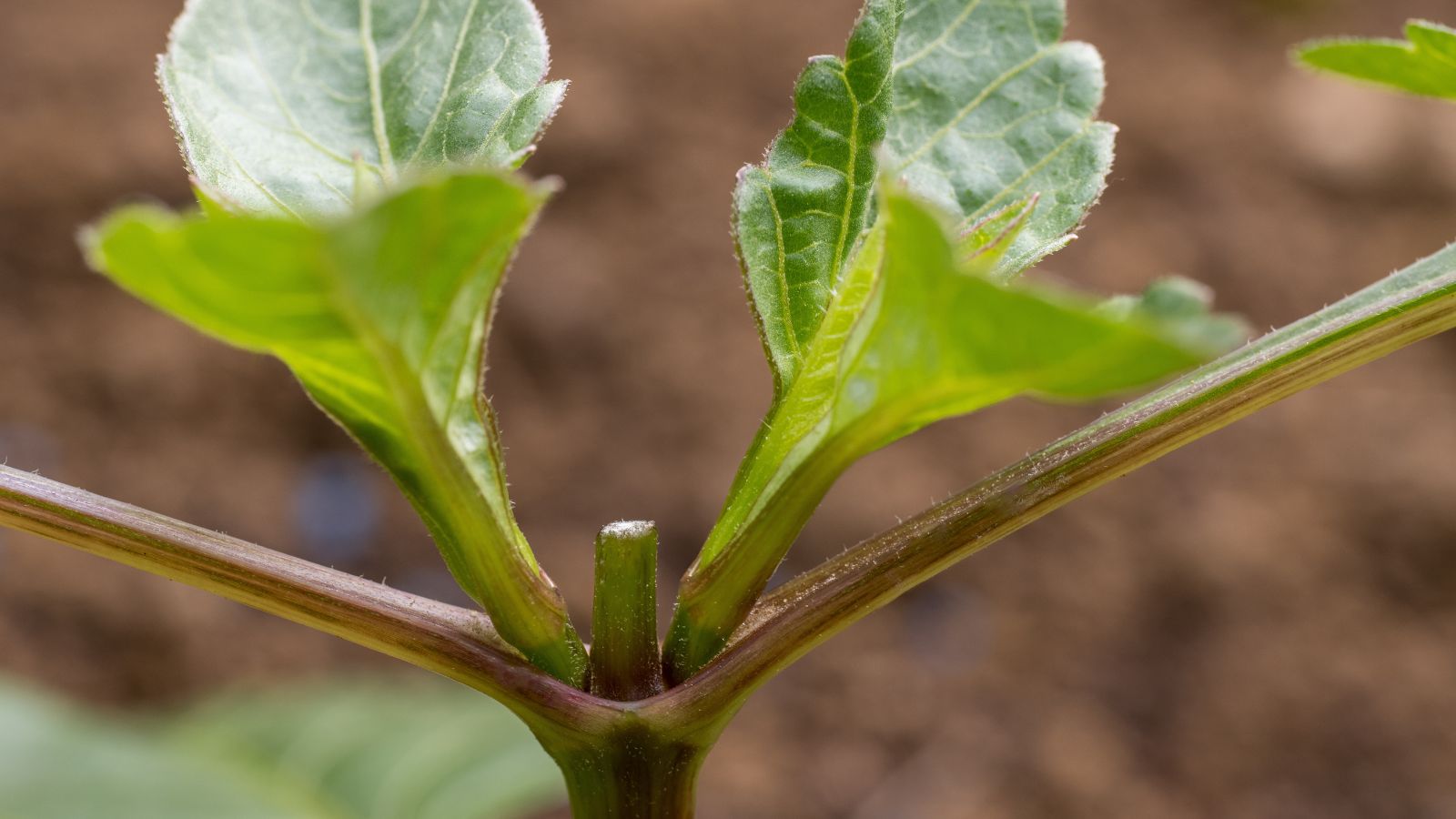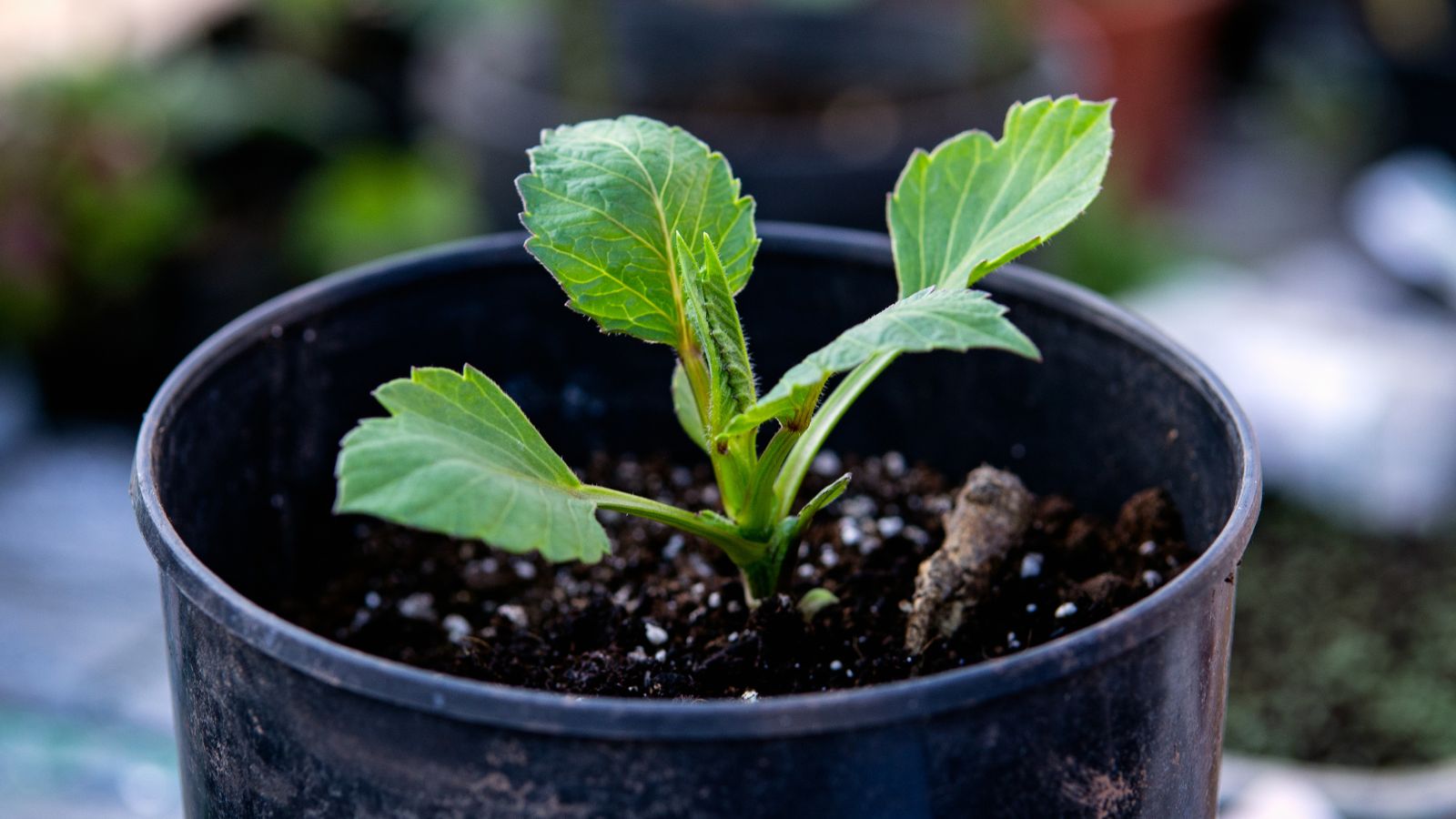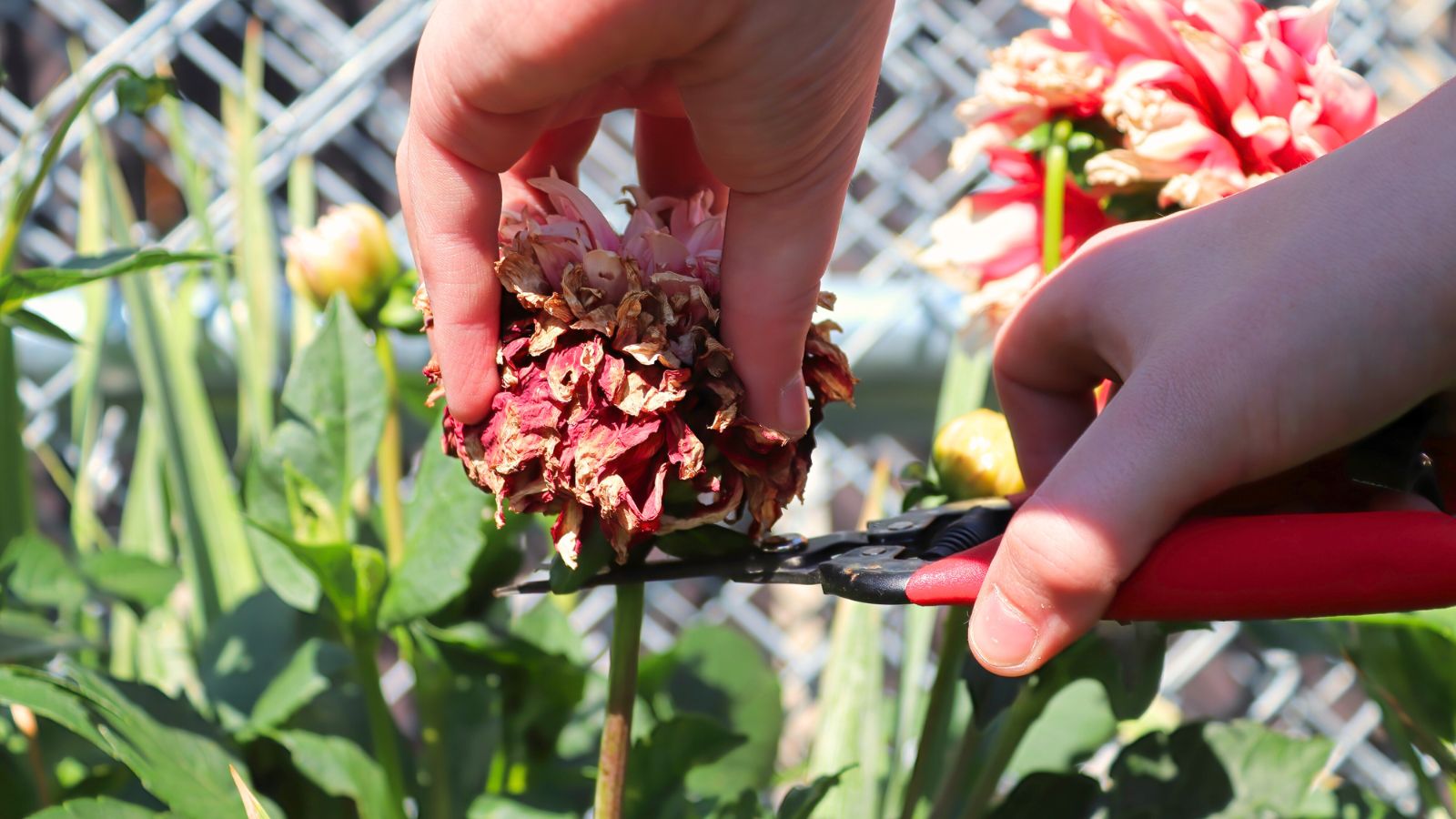PROTECT YOUR DNA WITH QUANTUM TECHNOLOGY
Orgo-Life the new way to the future Advertising by AdpathwayI love growing dahlias. They have some of the most impressive blooms of any flowers in the garden. They come in so many shapes, sizes, and colors; they truly are a marvel, especially in the cutting garden. Overgrown dahlias, however, can be problematic and disappointing.
Overgrown can refer to several different aspects of a dahlia plant and has multiple causes. Too much nitrogen can lead to overly tall, leggy plants with weak, floppy stems that fail to support the blooms effectively. They will have fewer blooms to support, as well. Insufficient sunlight can cause the same thing to happen.
Plants that are excessively dense and bushy are susceptible to powdery mildew as well as other fungal diseases. If these dahlias aren’t properly pinched and thinned early on, this problem is likely to crop up. Overcrowded clumps of dahlia stems result from dense clusters of tubers. These plants produce too many shoots for the available space, making it difficult to stake them. They can also become root-bound.
Proper pinching and pruning are essential for creating a healthy, robust, and productive dahlia plant. There are also a few other factors of care that can help prevent overgrown dahlias. Let’s learn how to properly pinch and prune dahlias!

Divide Tubers Yearly
 It’s recommended to divide yearly.
It’s recommended to divide yearly.If you want healthy dahlias right from the start, it’s essential to divide your tubers regularly. Every one to two years, when the growing season is over, splitting up those tuber clusters will help prevent overcrowded stems.
If your tuber cluster produces too many stems, you may end up with a crowded dahlia with a lack of air circulation and sunlight to the center. These are important factors because dahlias can develop fungal diseases if their foliage is too dense.
Divide your dahlia tubers in fall before storing them or before planting or growth begins in spring. Separate them so that each tuber cluster has one to two eyes each. They will produce one stalk from each eye, and you will have nicely spaced plants.
Pinch at the Right Time
 When you pinch and prune your dahlias, it promotes more blooms.
When you pinch and prune your dahlias, it promotes more blooms.Pinching your dahlias is essential if you want full, lush plants that produce more blooms. It helps to develop a stronger plant structure and encourages bushier growth. You don’t want your plants crowded, but you also don’t want them to grow tall and spindly, producing fewer flowers.
When your plants are about a foot tall with three to four sets of leaves, pinch off the top of the stem just above a leaf node. You can use scissors, but the newer stems are tender, and it’s usually easy to pinch them off with your fingers.
If you want extra full plants, you can pinch again when the new branches have a few sets of leaves. However, the more you pinch, the more you prolong blooming. One pinch early on usually does the trick. It creates a stockier, shorter plant in the long run, which will stand up better to wind and rain.
Thin the Interior
 You can use hand pruners or pinch them with your hands.
You can use hand pruners or pinch them with your hands. Thinning the interior of your dahlia plants is another helpful practice. It helps to improve airflow, reduces the risk of diseases, and promotes more energy applied to the strong stems and blooms, which makes them bigger and more plentiful.
The time to thin the interior of your dahlias is midseason, when your plants are bushy and nearing their flowering time. Do it on a dry day. You can use a hand pruner, but I prefer to pinch off the dahlia interiors, just as we did before.
Study the center of the plant, looking for weak or spindly stems. Cut away any stems that are unlikely to flower, and any that cross over others, as this weakens them both. Remove the leaves at the lower portions of the stems, particularly the interior ones. Pinching improves airflow and helps your dahlia apply more energy to flowering.
Fertilize Properly
 Mix a small amount of low-nitrogen fertilizer into the soil.
Mix a small amount of low-nitrogen fertilizer into the soil.When it comes to fertilizing, your dahlias have specific needs. They do like regular feeding, but it’s important to maintain the proper nutrient balance. An overabundance of nitrogen will lead to tall, excessively leafy stems that may be leggy and floppy.
At the time of planting, mix a small amount of fertilizer into the soil, but not in direct contact with the tubers. Use a low-nitrogen formula such as a 5-10-10 ratio. This will help develop healthy roots and put them on their way to strong, robust blooms.
After your plants sprout, but while they are still under six inches tall, fertilize again with an organic liquid formula. Then, continue to do so every three to four weeks. When your dahlias reach peak blooming time, which typically happens in late summer or early fall, depending on your climate, stop fertilizing them.
Cut Blooms Correctly
 Prune and deadhead dahlias regularly to promote more floral harvests.
Prune and deadhead dahlias regularly to promote more floral harvests.Dahlias respond well to frequent pruning, so harvesting those flowers regularly is an essential part of maintaining a vigorous, healthy plant. If you allow your plants to grow unchecked, you will wind up with oversized plants that don’t flower much.
I grow my dahlias specifically for cutting the flowers, so this is rarely a problem for me. But, if you’re growing them to be ornamental in the garden, it might be hard to bring yourself to cut off the flowers until they die. We’ll get to that in a minute, but let’s discuss how to cut your flowers properly.
Always use clean, sharp scissors or pruners. Dahlias have hollow stems, making them easy to crush and break. The best time to cut the blooms is in the morning or evening, when they are well hydrated. Wait until the flower is fully open, as most won’t continue to open after cutting.
The best flowers for cutting are those with long, strong stems. Stems of about 12-18 inches are ideal. Cut your stems just above a set of leaf nodes to leave a clean-looking stem without an extra nub between what will become two new branches. Cutting down as far as you can will make the new branches start lower on the plant, which will make it stronger and bushier.
A note on cutting your dahlia blooms: I like to carry a jar of cool water out to the garden with me so that I can immediately submerge the cut stems. They will draw up that water right away and stay hydrated longer for a longer vase life.

Deadhead Properly
 Cut just above a node to promote stronger side shoots.
Cut just above a node to promote stronger side shoots.If, rather than cut the blooms for arrangements, you leave them on the plant to be decorative outdoors, you’ll need to deadhead properly. Leaving the spent blooms on the plant will slow the flower production, but the stems will continue to grow. You’ll end up with tall, spindly stems and few flowers.
When you remove the spent flower, don’t just snip the top off. This will leave a long stump that won’t flower again right at the top of the plant. Use a clean, sharp pruner and cut the whole stem down to a node. Make your cut just above the node to encourage stronger side shoots. You’ll get far more blooms this way, and stronger, stouter plants that look nicer, and tolerate strong winds better.
Deadheading and pruning/pinching is vital to keeping your dahlias flowering. It prevents them from going to seed, which takes a lot of energy away from producing flowers. It keeps your plant looking neat and robust, and it stimulates continuous blooming. In short, it will extend the lives of the plants and keep them looking beautiful throughout the entire season.


 3 weeks ago
22
3 weeks ago
22





















 English (US) ·
English (US) ·  French (CA) ·
French (CA) ·